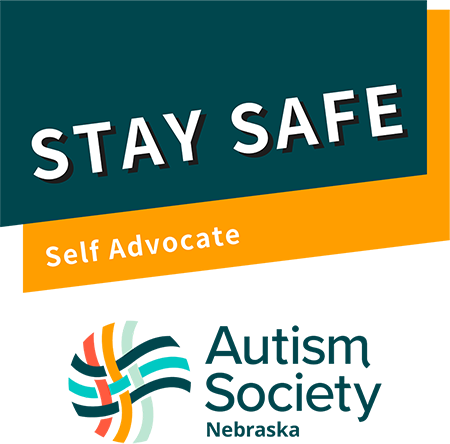Communicating effectively with health care providers is very important for several reasons. For example, being able to communicate how your body feels can provide your health care provider with important clues to your health. Or communicating about the accommodations you may need during an appointment to help you feel comfortable may lead to a more successful appointment. There are many different ways to communicate with your medical providers. Below are some of our favorites.
Review
About me Form
Therapist Called Ahead
Tips for Completing a Body Check Form
Appointment Prep form
Additional Resources:

AASpire Healthcare toolkit – Primary care resources for adults with ASD and their providers. https://autismandhealth.org



Practice
Once your forms and/or videos are complete, it is time to practice using them before the appointment. You may not need to practice before all healthcare appointments, but when you are using the communication strategies for the first time or two, it can be helpful to practice.
Ask a trusted person to practice with you. They can play the role of a health care provider and you can play ‘you’, the patient.
During the role play-When they first greet you as if it is the start of the appointment:
- Practice handing them the About Me Form. Think about what you will say when you hand them the form. Maybe it is something like, “This is form has important information about me that I need you to know. Will you please take a minute to read it?” (Tip: you can write what you want to say on the top of the About Me Form if you think you could have a difficult time remembering what to say during your actual appointment).
- Moving forward in the appointment, use your appointment prep guide to answer the provider’s questions. You can either read from the form or show relevant parts of it to the provider and they can read it.
- If you completed a Body Check Form as a way to communicate your symptoms/concerns, practice sharing this form with the provider when they are asking you questions about how you are feeling or to describe your symptoms/concerns.
If you have a Pre-Recorded Symptoms Video, practice playing this for the doctor as well.
Reflection
Did you use any of the communication strategies during your appointment?
If yes:
- Which did you use?
- What worked well?
- What didn’t work well?
- Was the provider open to using your communication strategies?
- If yes, great.
- If no, what is your plan for moving forward? Perhaps ask a trusted person for advice, or ask them to call the office before your next appointment to ensure the provider understood what you were communicating.
- Is there anything you want to try differently for the next appointment?
If no:
- What prevented you from using the communication strategies?
- What is your plan for overcoming this obstacle(s) for your next appointment?
- Do you need to ask someone to help you with this plan? If so, who will you ask?
Important note: Although it can be helpful for you to use strategies to help healthcare appointments go smoothly, it is also the responsibility of the medical provider to contribute to the success of your appointment. Sometimes an appointment may not go well because the medical provider lacks knowledge regarding autism. They also may not fully understand what you need from them to be successful during healthcare visits. Many providers are interested in learning how to better support autistic patients. However, you may encounter a provider that is not cooperative with your strategies and needs during a visit. In this case, here are a few suggestions:
- Talk to a trusted person about your concerns. Share with them the strategies you tried during your healthcare appointment and the response(s) of the provider. Sometimes it can help to get the input of a trusted person and they can help you determine next steps you should take.
- Share feedback with your provider via email or healthcare portal. After an appointment, send a short message to your provider about what they did that was helpful as well as a few things you would like to be done differently during the next appointment. This can establish open communication. When making requests for the provider to implement during the next appointment, it can be helpful to state the request and then explain how that will promote your success (for example: please turn off any overhead fluorescent lights because they are so overwhelming that it reduces my ability to focus on what you are saying).
- Seek a more supportive provider. If your insurance allows, seek out a different provider that may be more supportive during your visit. Many people find a new provider if they are not satisfied with the care they are receiving.
- Start out with a provider that is knowledgeable in autism. To reduce the chance of being misunderstood or unsupported by a provider, before making an appointment, inquire about their knowledge of autism and experience with other autistic patients. Finding providers that have advanced understanding in supporting autistic patients can be a challenge at times, but they do exist. You can even try contacting pediatricians or pediatric specialists (e.g., pediatric Occupational Therapists) who tend to have more autism training than adult providers and ask them to consider accepting you as a patient/client (it can be helpful to explain to them why!).
